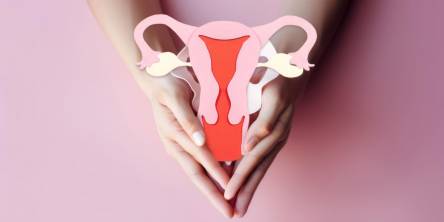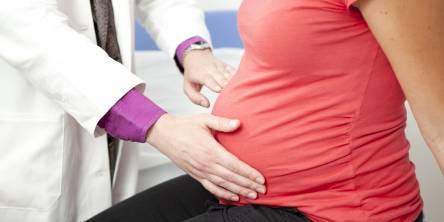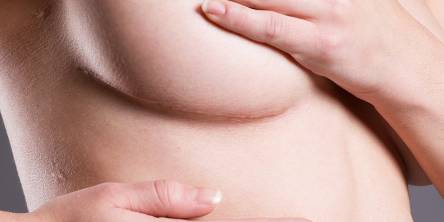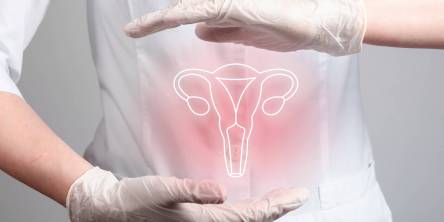Women's Health - All About Bones and Wellness

Of the estimated total population having osteoporosis and osteoarthritis, 80% are women. One in two women over the age of 50 get serious fractures because of onset or severe osteoporosis. A bone injury at that age means serious length of recovery and difficulty in returning to normal mobility. Why this increased proclivity for bone deterioration in women?
On average, women have smaller and thinner bones than men, which become less dense as women age. Menopause onset means lesser and lesser estrogen production-estrogen protects bones, and the sharp decline leads to slower bone replacement and decreased strength. Orthopedic doctors, in tandem with gynecologists and other specialists, can be consulted to prevent or manage osteoporosis and its symptoms.
Is it Really That Bad?
There is an inevitability of bone strength declining as women age, but advances in medicine mean that we know more and more about how to manage osteoporosis and even prevent it through lifestyle changes. Younger women can start by making very small changes to their lifestyle to build stronger, healthier bones. Dubai physiotherapy can also help mitigate the aftermath of serious injury or chronic pain to help prevent an alleviation in bone issues ion the future.
Some of the important things are-eating a calcium and vitamin-D rich diet, and avoiding alcohol and nicotine. Among the common health issues which directly cause osteoporosis are eating disorders such as bulimia and anorexia nervosa. Conditions such as amenorrhea caused as a consequence of eating disorders is a sure-fire (and very painful) trek to osteoporosis.
When premenopausal or younger women have osteoporosis, it is largely to do with genetics or a medical condition, which sometimes causes a form of secondary osteoporosis. If none of these genetic underpinnings are causing osteoporosis, you may have something called “idiopathic” osteoporosis.
Diagnosing and Treating Osteoporosis
While the most common method to diagnose osteoporosis is bone density testing, it is not recommended for younger women. This may be due to several reasons, such as an unnecessary expense and the likelihood that these tests can give flawed results for women who are slender and small. This means that the test will indicate low bone density, but for smaller women the DXA might actually be normal given their size.
The other reason is that the post-diagnostic steps for treatment of low bone density are discouraged by both gynecologists and orthopedics to be prescribed to younger women. Generally, the process involves taking a complete family medical history, a physical exam, X-rays- with bone mineral density testing being among the foremost indicators of early onset osteoporosis.
What is Bone Density Testing?
A bone density test is meant to indicate the amount of mineral you have in your bones. It is the primary metric through which osteoporosis is diagnosed in older people. The common test administered is called a dual energy x-ray absorptiometry, or DXA test. Another common test is FRAX, which is a fracture risk calculator. After the DXA has indicated the mineral composition of your bones, the FRAX takes note of other inputs such as age, sex, weight, height. It is a predictive test that measures a 10-year probability of your having a major osteoporotic fracture. Of these, if a shoulder, spine, hip or forearm fracture is predicted at 20% or more, or a hip fracture over 3% or more in the next decade, the test determines the prevalence of osteoporosis.
Treatments - the Good, the Bad, the Ugly
Premenopausal women cannot safely take osteoporosis medicine, but that does not mean there is no method to assist with the disease in younger women. For example, women who have taken steroid medicines before can take some formulations of osteoporosis medicine. Pregnant women can best manage their symptoms by increasing their calcium and vitamin D intake, since the baby is likely to extract calcium from the mother, warranting swift replacement.
It is a common myth that having children increases the likelihood of osteoporosis, research suggests the contrary-pregnancy might actually shield the woman from the likelihood of bone deterioration and injury. Breastfeeding, too, might cause temporary decrease in bone density, but it is easily managed by taking vitamin D supplements.
Conclusion
It is important to note that while common, women’s bone health issues are not life-threatening. With lifestyle change, you can avert challenges of bone and joints. Osteoporosis medicine is very effective, but it has its own side effects. You should consult an obstetrician and gynecologist as well as an orthopedic specialist to determine whether you should take medication at all.
If you decide not to, proactive steps such as regular exercise, including high-intensity training, weight lifting, swimming, being careful when working out and exercising to prevent fractures, a balanced diet, and supplemental calcium and vitamin D should keep your bones healthy and safe.
Similar Articles
If you have hip discomfort during perimenopause or beyond menopause, there may be a relationship. Reduced estrogen levels might raise your chance of getting gluteal tendinopathy. They may also contribute to osteoarthritis, which can damage several joints, including the hips.
Breast lift surgery lifts the breasts, strengthens the tissue, and eliminates extra skin to boost elevation and better nipple positioning.
An enlarged vagina can occur as a result of unrelated events, such as the end of pregnancy or after sex. It can also be caused by vaginal irritation from wearing synthetic fabric underwear or a sexually transmitted disease such as genital herpes.
Uterine fibroids are one of the most common gynecological diseases that affect many women during their reproductive years. In this article, we will look at all aspects of this condition, including its causes, symptoms, diagnosis, treatment, and possible complications.
Polycystic ovarian disease (PCOD) is a hormonal disorder prevalent among women of reproductive age. It occurs when a woman's ovaries or adrenal glands produce higher-than-normal levels of male hormones, called androgens. This hormonal imbalance disrupts the menstrual cycle and leads to the formation of small cysts on the ovaries
Uterine fibroids are benign tumors that develop in the uterine muscle tissue. According to the US Office on Women's Health (OWH), fibroids can grow as a single tumor or as a cluster in the uterus, and they can be as small as an apple seed or as large as a grapefruit.
Your pregnancy test came back positive, and nothing, not even early pregnancy symptoms like morning sickness or exhaustion, can dampen your spirits. However, it is natural to worry about what to do when you discover you are pregnant.
A breast lift, like any other operation, involves skin incisions. Scarring occurs when your skin generates new tissues and mends the wound after an incision. There are, however, measures to reduce scarring before, during, and after a breast lift.
The cervix's proper functioning is crucial to a woman's reproductive health and fertility. However, most women do not know anything or have a limited understanding of it. As a result, there are numerous misconceptions surrounding cervical health.









